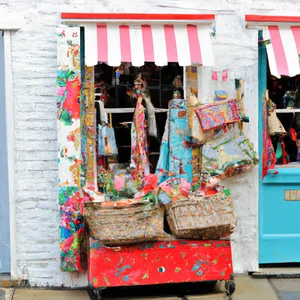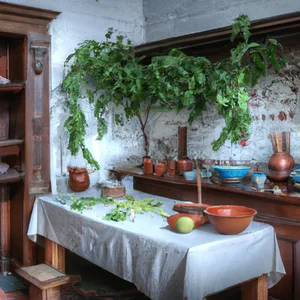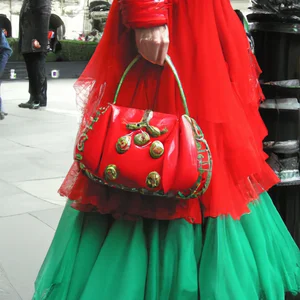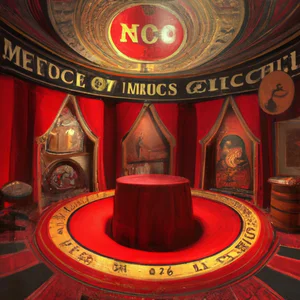Book your experience
Typical English desserts: where to taste the best traditional desserts in London
So, let’s talk about English desserts, the ones that make your mouth water, you know? If you’re in London and want to enjoy some traditional sweetness, there are places that are the bomb. I’m not 100% sure, but I think there are a couple of places that you really can’t miss.
First, there’s this little place called “The Great British Cake Shop” – well, the name says it all, doesn’t it? There you can find cakes that seem to come out of a fairy tale, like the Victoria Sponge which, I tell you, is a delight. But it’s not just the cake! Even the biscuits, the buttery ones that melt in your mouth, are mouth-watering. Once, I went there with a friend, and we ended up ordering a couple more things and… well, let’s just say we rolled home.
Then there is the classic of the classic: Christmas pudding. Now, it’s not like you only eat it at Christmas, eh! There are places where they serve it all year round. It’s like a sweet and spicy hug, with dried fruit and everything. By the way, I tried a pudding that made me think I had stepped back in time, as if I were in a country house over the festive period. Maybe a little exaggerated, but you get the idea.
And let’s not forget afternoon tea! It’s almost a ritual, really. You can find places where they serve you a selection of sweets, such as scones and jam, and you feel a bit like the queen while enjoying it. Once, I met a group of friends there and we chatted for hours while enjoying these sweet treats. It was like a movie, really.
In short, London has a lot of traditional desserts that make you feel at home, even if you are perhaps on the other side of the world. So if you’re in the area, pop in and try some. It might even be that you find your new favorite dessert. Maybe it’s just around the corner, who knows?
Classic English desserts: a sweet introduction
I remember the first time I tasted sticky toffee pudding in a small pub in London, “The Harp” in Covent Garden. Its soft, moist texture, with that rich caramel that melted in your mouth, was an experience that awakened my senses and made me fall in love with British pastry. Each bite told a story of tradition and culinary passion, and I immediately understood that English desserts are not just sweets, but a real journey into the heart of British culture.
A journey into dessert
Among the typical English desserts, iconic names stand out such as bread and butter pudding, scones and, of course, sticky toffee pudding. These desserts not only satisfy the palate, but also represent an important piece of the UK’s culinary history. Often, these desserts were made with simple, salvaged ingredients, reflecting a tradition of home cooking that has spanned generations.
A little-known insider tip is to look for regional variations of these desserts. For example, in some areas of England, sticky toffee pudding includes pecans, providing an interesting contrast and a new dimension of flavor.
The confectionery tradition in a cultural context
The history of English desserts is closely linked to holidays and moments of conviviality. During the Christmas period, Christmas pudding becomes the protagonist of the tables, but it is only one of the many desserts that bring people together around a laid table. This tradition of sharing is a fundamental element of British culture, where sweets represent not only a personal pleasure, but also a way to create social bonds.
Towards responsible tourism
In an age where sustainability is crucial, many restaurants and cafes in London are adopting responsible tourism practices. Choosing desserts prepared with local, seasonal ingredients not only supports the local economy but also reduces environmental impact. Some places, such as “Ottolenghi”, offer delicious desserts using organic and sustainable products, combining tradition and innovation.
An experience not to be missed
When you are in London, don’t miss the opportunity to attend a traditional afternoon tea, where you can enjoy a selection of typical desserts, including scones, cakes and biscuits. Many places, such as “Claridge’s”, offer an unforgettable experience, with an elegant atmosphere and impeccable service.
English desserts are often thought to be unsophisticated, but in reality, they hide a complexity and richness of flavor that deserves to be explored. We invite you to discover and taste these desserts to form your own opinion.
A final reflection
The next time you taste a typical English dessert, ask yourself: what story lies behind each bite? Each dessert is an invitation to explore not only the flavors, but also the traditions and cultures that surround them. What is your favorite English dessert and what story would you like to tell?
Where to enjoy the best Sticky Toffee Pudding
A journey through flavors
I still remember the first time I tasted a Sticky Toffee Pudding: a sweet rainy evening in London, taking refuge in a traditional pub in the heart of Soho. The air was filled with notes of caramel and dates, while the warm light of the lamps created an intimate and welcoming atmosphere. When the dessert arrived, wrapped in a glossy toffee sauce and served with a generous scoop of vanilla ice cream, I knew it was more than just a dessert: it was a warm hug on a gray day.
Where to find the best Sticky Toffee Pudding
For one of the most authentic experiences, I recommend visiting The Ivy. This iconic restaurant is not only known for its elegance, but their Sticky Toffee Pudding is a masterpiece that has captivated the palates of many. Another gem is The Fox & Anchor, a historic pub with a lively atmosphere, where dessert is prepared according to the traditional recipe, rich in dates and served with a toffee sauce that seems almost like a dream.
An insider tip
If you want to try a less common version, look for regional variations. Some artisan restaurants in London offer a Sticky Toffee Pudding with a touch of local spices or even a pinch of sea salt to enhance the sweetness. This small change can transform an already delicious dessert into an amazing dining experience.
A dessert with a story
Sticky Toffee Pudding has roots that lie in the English culinary tradition, dating back to the early 20th century. Its combination of simple and genuine ingredients, such as dates, flour and cane sugar, tells the story of an era in which desserts were prepared with what the earth offered. Today, it is a symbol of conviviality and comfort, often served in pubs and restaurants during family dinners.
Sustainability and responsibility
Looking to enjoy this classic dessert, consider choosing restaurants that are committed to sustainable practices. Many venues in London now use organic and locally sourced ingredients, thus reducing environmental impact and supporting local producers. Always ask about the ingredients used and find out where and how they are grown.
An experience not to be missed
If you’re in London in autumn, take a food tour of local markets, where you might discover unique variations of Sticky Toffee Pudding, prepared by up-and-coming chefs. These experiences not only delight the palate, but also give you the chance to meet locals and better understand the city’s culinary culture.
Myths and reality
A common misconception is that Sticky Toffee Pudding is a heavy dessert and difficult to digest. In fact, its moist texture and balance between sweetness and flavor make it surprisingly light, perfect for closing a substantial meal without feeling weighed down.
A final reflection
As you enjoy your Sticky Toffee Pudding, consider how a simple dessert can hold stories, traditions and a sense of community. Which dessert represents a special memory for you? Sharing a traditional dessert in good company is not only an act of taste, but also a way to connect with local culture and create new memories.
Scone and jam: the art of afternoon tea
A personal experience
I vividly remember my first visit to a traditional tearoom in the heart of London. As I sat at the table, the scent of fresh tea mingled with that of freshly baked scones. The waitress, with a warm smile, presented me with a plate of golden scones, accompanied by a generous portion of clotted cream and strawberry jam. It was a moment that captured the essence of British culture: simple, yet incredibly fulfilling.
The afternoon tea ritual
Afternoon tea, or afternoon tea, is much more than a simple coffee break. It’s a ritual that has its roots in the 19th century, when Anna Maria Russell, the 7th Duchess of Bedford, began serving tea and snacks in the afternoon to combat hunger between lunch and dinner. Today, this custom is celebrated across the UK, with scones being one of its key elements.
Where to enjoy the best scones in London
To taste authentic London scones, I recommend you visit Fortnum & Mason, one of the most renowned institutions in the capital. Here, you can enjoy soft, warm scones, served with a selection of artisanal jams and rich clotted cream. Don’t forget to accompany them with a cup of tea selected from their wide range.
An insider tip
A little-known tip is to visit local markets, such as Borough Market, where some of London’s best bakers offer unique scones, often made with local, seasonal ingredients. Here, you’ll have the opportunity to discover interesting variations, such as lemon and lavender scones, which bring a contemporary twist to this classic dessert.
The cultural impact
Scones aren’t just a dessert; they represent a moment of conviviality and relaxation. This afternoon tea ritual has influenced British culture, becoming a symbol of hospitality and refinement. It is an opportunity to socialize, reflect and enjoy a moment of pause in the frenzy of everyday life.
Sustainability and responsibility
In an age where sustainability is key, many London tearooms are adopting responsible practices. Opting for organic and local ingredients not only enriches the flavor of the scones, but also supports the local economy and reduces environmental impact. Be sure to always ask where the ingredients come from.
An activity worth trying
If you want to fully immerse yourself in the art of afternoon tea, why not book a cooking class? Several cooking schools in London offer workshops on how to make perfect scones. Learning to make your own afternoon tea will be an unforgettable experience and a great way to bring a piece of British culture home.
Myths and misconceptions
A common misconception is that scones should only be served with strawberry jam. In fact, you can find a variety of jams and spreads, each with its own unique flavor profile. Don’t be afraid to experiment!
A final reflection
When you think of afternoon tea in London, what images come to mind? Perhaps a table decorated with elegant dishes and a selection of desserts. But remember, it’s also a time of connection and tradition. Have you ever wondered how the simple act of sharing a scone can bring people together?
The history of Bread and Butter Pudding
A childhood memory
I remember a winter Sunday afternoon, as the rain beat softly against the windows of my grandmother’s kitchen. The sweet and enveloping scent of bread and butter pudding wafted through the air, creating an atmosphere of warmth and nostalgia. This dessert, simple in its essence, has the power to evoke memories of shared moments and families gathered around the table. Its history is rich and fascinating, a true journey through time that brings with it England’s culinary heritage.
The origins of the dessert
bread and butter pudding has roots dating back to the 18th century, when families tried to reduce waste and use leftover bread. The combination of buttered bread, eggs, milk and sugar has become a symbol of economy and ingenuity, transforming simple ingredients into a delicious dessert. Today, the pudding is a staple of British culinary tradition, often served in pubs and restaurants across the country.
An insider tip
If you want to enjoy an authentic bread and butter pudding, I recommend you visit The Ivy, an iconic restaurant in London. Here, the pudding is prepared according to the traditional recipe, but with a modern twist: a splash of vanilla and a generous portion of crème anglaise. A little secret that only locals know is that, for an even richer experience, you can request a version with dark chocolate. It’s a real comfort food that will make you feel at home, even thousands of kilometers from your country.
A cultural impact
Bread and butter pudding is not just a dessert; it’s a piece of British history. It represents the resilience and creativity of a people who, through adversity, have found ways to create beauty and sweetness. This dessert is often associated with family holidays and celebrations, making it a symbol of unity and tradition. Today, many chefs reinterpret the original recipe, introducing local and seasonal ingredients, thus contributing to a cultural continuity that celebrates the past while embracing the future.
Sustainable tourism practices
When enjoying bread and butter pudding, consider doing so at a restaurant that uses local, sustainable ingredients. Many venues in London are making efforts to reduce their environmental impact by choosing suppliers who practice responsible farming. This not only enriches your palate, but also supports the local economy.
An experience not to be missed
To fully experience this delight, I recommend taking part in a cooking workshop where you can learn how to prepare your own bread and butter pudding. There are several cooking schools in London that offer hands-on courses, allowing you to bring a piece of England home. Not only will it be a fun experience, but you can also impress your friends and family with your new cooking skills.
Myths and misconceptions
A common misconception is that bread and butter pudding is a boring and predictable dessert. In reality, its versatility allows infinite variations: from dried fruit to spices, up to different types of bread. Each chef can give their own personal touch, making every tasting a unique adventure.
A final reflection
As you savor a spoonful of this traditional dessert, ask yourself: What personal stories and traditions might we preserve and pass down through our dishes? Bread and butter pudding is more than just a dessert; it’s a connection between generations, an invitation to explore and celebrate British food culture.
Discover the vegan dessert: a modern delight
A personal experience
I still remember my first visit to a cozy café in Camden, where a vegan friend introduced me to the world of vegan desserts. While the scent of freshly baked pastries mixed with the crisp air of the market, I found myself in front of a sticky date cake made without animal ingredients. Surprise and curiosity turned into an explosion of flavors, proving that you don’t need eggs or butter to create extraordinary delights.
Vegan desserts not to be missed
Today, London is a true paradise for those seeking vegan desserts, with a variety of options ranging from reinterpreted classics to innovative creations. Places like Manna and The Fields Beneath are renowned for their sweet offerings, where every bite is a celebration of fresh flavors and sustainable ingredients. In fact, the growing demand for vegan desserts has pushed even the most traditional restaurants to include animal-free options in their menus.
An insider tip
A little-known tip is to always ask the restaurant staff if there are any special desserts of the day. Often, artisan cafes create limited-edition vegan desserts, using seasonal ingredients you won’t find on the regular menu. This not only enriches your dining experience, but also supports local producers.
Cultural and historical impact
Vegan dessert isn’t just a fad; represents a response to growing concerns about the environment and animal welfare. Its spread in London reflects a broader cultural change, where a balance is sought between taste and sustainability. Vegan desserts, with their creativity, are redefining confectionery traditions and paving the way for new culinary interpretations.
Sustainability in desserts
When we talk about vegan desserts, we cannot ignore sustainable tourism practices. Many London restaurants and cafes are committed to using organic ingredients and reducing their environmental impact. Choosing to enjoy a vegan dessert is not just a food choice; it is a way to support a more responsible and environmentally friendly economy.
An experience worth trying
If you are in London, I recommend taking part in a vegan cooking workshop. Places like The Vegan Chef offer hands-on courses where you can learn how to make delicious, sustainable desserts. Not only will you take home new recipes, but also a new understanding of the potential of vegan food.
Myths to dispel
A common misconception is that vegan desserts are bland or unsatisfying. In fact, many creative chefs use ingredients like dried fruit, dark chocolate, and non-dairy milk alternatives to achieve rich, indulgent flavors. Don’t be fooled by this perception: a vegan dessert can be as much, if not more, satisfying than a traditional one.
Final reflection
In a world increasingly attentive to sustainability and health, vegan desserts represent an opportunity to explore new culinary horizons. We invite you to discover this delicious side of London cuisine and reflect on how even a simple dessert can make a difference to our planet. Which vegan dessert impressed you the most?
Unique culinary experiences: desserts in local markets
I remember the first time I visited Borough Market in London. As I got lost among the colorful stalls, the enveloping scent of spices and sweets captured me. At a certain point, I found myself in front of a counter displaying an incredible variety of traditional English desserts, but one in particular caught my attention: a sticky toffee pudding that almost looked like a work of art. art. That initial bite, with its softness and melt-in-your-mouth caramel, was a gastronomic experience I will never forget.
Local markets: a treasure trove of sweets
London’s local markets are treasure troves of culinary delights. In addition to the Borough Market, which is undoubtedly the most famous, you can’t miss the Camden Market and the Southbank Center Food Market. Here, visitors can enjoy a wide range of traditional and innovative desserts, often prepared with fresh, local ingredients. The variety is incredible: from classic scones with jam to modern vegan desserts, every corner offers something unique.
Insider Tip: If you want an authentic taste of sticky toffee pudding, look for local vendor stalls who make it using family recipes. Often, these desserts are made with organic ingredients and without chemical additives, offering an authentic and wholesome flavor.
A journey into confectionery culture
The tradition of desserts in local markets reflects an important part of British culinary culture. Desserts are not just a matter of taste, but also of history. Many desserts, such as bread and butter pudding, were born as creative solutions to avoid wasting leftover bread and represent the perfect example of how cooking can transform simple ingredients into masterpieces.
Sustainability: the dessert that is good for you
In an era where sustainability is key, many local markets are embracing responsible practices. Several stalls source their supplies from local producers, reducing the environmental impact and supporting the community’s economy. By choosing to enjoy desserts in these markets, you will not only delight your palate, but you will also make an ethical choice.
An experience not to be missed
If you want to have an unforgettable culinary experience, I recommend taking part in a cooking workshop in the local markets. Many vendors offer courses on how to make traditional English desserts, allowing you to take a piece of food culture home with you.
Myths and misconceptions
A common misconception is that English desserts are always heavy and unappetising. In fact, the variety is amazing and there are many light and fresh options to discover. Try asking sellers to show you their most innovative creations and let yourself be surprised.
A sweet reflection
While you enjoy a dessert in the local markets, I invite you to reflect on how much cuisine can be a bridge between different cultures. Every dessert tells a story, and every bite brings you closer to an age-old tradition. Which dessert represents you the most and why?
Christmas Pudding traditions: beyond dessert
I still remember the first Christmas spent in London, sitting around a table set with a mix of flavors and aromas that told stories of centuries-old traditions. The highlight of the dinner was the Christmas Pudding, a dessert that seemed to exude a magic all its own: dark, rich and decorated with a brandy flame, it brought with it the essence of English Christmas. This dessert is not just a dessert; it is a symbol of union and celebrations that embodies centuries of history and rituals.
History and traditions
Christmas Pudding has ancient origins, dating back to the Middle Ages, when it was prepared as a meat and fruit soup. As the centuries passed, the ingredients evolved, and today it consists of dried fruit, spices and, often, a good splash of alcohol. Each family has its own secret recipe and a tradition that accompanies it: from the preparation, in which each family member mixes the dough and makes a wish, to the moment of presentation, when it is flambéed and served with cream or butter sauce.
An insider tip
If you want an authentic Christmas Pudding experience, look into taking part in a Christmas pudding making class. On these courses, held in small local patisseries, you will not only learn how to prepare the dessert, but you will also hear fascinating stories about English Christmas traditions. One renowned venue is The Cookery School in London, where expert chefs will guide you through every step of the process.
Cultural reflections
Christmas Pudding is much more than just a dessert; represents a collective tradition that unites families and celebrates the holiday season. His preparation and its consumption are full of symbolic meanings, such as hope and prosperity for the year to come. It is not uncommon to see families gathering to enjoy this dessert together, creating bonds and memories that will last over time.
Sustainability and responsibility
In recent years, many bakeries and restaurants in London have started producing Christmas Pudding using local and organic ingredients, thus reducing the environmental impact. Choosing a sustainable dessert is not only a responsible choice, but it also supports local producers and British culinary traditions.
An experience not to be missed
During your stay, don’t miss the opportunity to visit Christmas markets, such as the Southbank Center Winter Market, where you will find different variations of Christmas Pudding, from the most traditional to the most innovative. Here, in a festive atmosphere, you can savor dessert while enjoying the twinkling lights and the scent of mulled wine.
Myths and misconceptions
A common misconception about Christmas Pudding is that it is a heavy dessert and difficult to digest. In reality, the combination of dried fruit and spices, together with a good dose of alcohol, creates a perfect balance of flavors and textures that can surprise even the most demanding palates.
In conclusion, Christmas Pudding is a dessert that embodies the essence of British Christmas. We invite you to reflect on which culinary traditions you carry in your heart and how these can enrich your celebrations. What is your favorite Christmas dessert and what story do you have to tell?
Sustainability in desserts: responsible choices in London
During one of my walks in the vibrant neighborhood of Shoreditch, I came across a little bakery that changed the way I look at sweets. The scent of freshly baked pastries mingled with the crisp air, and once I entered, I was greeted by a delicious selection of artisanal desserts, all made with local, sustainable ingredients. That’s when I discovered how London is not just a mecca for foodies, but also a beacon of responsible culinary practices.
Sweet and sustainable
In recent years, many London chefs and pastry chefs have embraced sustainability, opting for organic ingredients, reducing waste and working with local suppliers. This not only makes desserts fresher and more delicious, but also contributes to a more responsible food system. At bakeries like Pavilion Bakery and Naked Dough, you’ll find desserts made with wholemeal flours and unrefined cane sugars, as well as gluten-free and vegan options, all made with an eye on the environment.
An insider tip? Don’t miss **Manna’s vegan pavlova, a light and crunchy dessert, which demonstrates how sweets and sustainability can go hand in hand. This delight, in addition to being a pleasure for the palate, is made with ingredients with low environmental impact, making it a responsible choice.
A cultural impact
The English confectionery tradition is rich in history and meaning. From holiday desserts to recipes passed down from generation to generation, every dessert tells a story. However, growing awareness around sustainability is starting to change the way we perceive these classics. Desserts are no longer just a pleasure to enjoy, but have become symbols of a commitment towards a more sustainable future.
An experience not to be missed
If you are in London, I recommend visiting Borough Market, where several vendors offer sweets made with sustainable ingredients. Here, you can enjoy a sticky toffee pudding prepared with organic dates and served with whipped cream made from local milk. Not only will you satisfy your sweet tooth, but you will also support ethical producers.
Myths and reality
A common misconception is that sustainable desserts are less tasty or less elaborate. In fact, the creativity of London’s chefs proves that fresh, local ingredients can create incredible, memorable desserts, challenging the idea that sustainability compromises on flavour.
In conclusion, the next time you find yourself enjoying a dessert in London, ask yourself: how can this experience contribute to a more sustainable future? The sweetness of London desserts is not only in the flavor, but also in the way they are created and shared.
Tea biscuits: where you can taste real shortbread
When I think of afternoons spent in my youth, I am reminded of the scent of freshly baked biscuits that filled my grandmother’s kitchen. Among his specialties, shortbread was the undisputed king. I remember one particular visit to London, when I found myself in a cozy café in Notting Hill, where I was able to enjoy a shortbread that took me back in time. That biscuit, buttery and crumbly, melted in your mouth, and every bite was a dive into childhood memories.
The shortbread tradition
Originating from Scotland, shortbread has a special place in British culture and represents one of the most classic tea delicacies. Traditionally made with just three ingredients: butter, sugar and flour, this biscuit is a perfect example of how simplicity can create something extraordinary. In England, shortbread is often served during afternoon tea, a ritual that invites you to slow down and enjoy life’s little pleasures.
Where to find it in London
If you want to try real shortbread, you can’t miss the “Shortbread Shop” in Covent Garden, where local bakers prepare these biscuits fresh every day. Or, for a more authentic experience, visit the famous “Biscuiteers” in Notting Hill, where the shortbreads are decorated by hand and presented as small masterpieces of art.
- Unconventional tip: Many people don’t know that shortbread goes beautifully with a cup of Earl Gray tea. Try dipping it for an unexpected taste experience!
Cultural impact and sustainable practices
The shortbread is not just a dessert; it is a symbol of conviviality and hospitality. In many British households, it is a dessert that is offered to guests as a sign of welcome. Furthermore, more and more cafes in London are adopting sustainable practices, using local and organic ingredients to prepare their desserts.
A myth to dispel
A common misconception is that shortbread is a dry and not very tasty biscuit. On the contrary, a good shortbread is characterized by a perfect balance between butter and sugar, offering a rich texture and an enveloping flavor. Don’t let first impressions fool you!
An invitation to discovery
Next time you’re in London, take a moment to enjoy some fresh shortbread. I assure you that every bite is a journey into the heart of British tradition. And you, which typical English desserts have you already had the chance to try? Share your experience and be inspired by the culinary delights of this extraordinary city!
The secrets of London’s artisan pastry shop
A sweet memory
Walking through the streets of London, the air is filled with an unmistakable scent of butter and sugar. I fondly remember my first visit to a small pastry shop in the heart of Soho, where I witnessed the creation of exquisite desserts. While the baker expertly mixed the ingredients, I found myself immersed in an atmosphere that seemed to tell stories of past generations. Every cake, every biscuit, was not just a dessert, but a piece of history, a culinary legacy that London jealously guards.
Discovering artisan pastry shops
London’s artisan pastry shops are the beating heart of tradition British confectionery. From classic scones to modern pavlovas, each creation is prepared with fresh ingredients and traditional techniques. I recommend you visit “Pecan Pie” in Camden, a patisserie famous for its sticky toffee pudding. Here, desserts are not just food, but real works of art. Recently, they introduced a line of vegan desserts, thus responding to a growing demand for more sustainable options.
An insider tip
Here’s a secret that few people know: many of London’s best desserts are found in the markets. At Borough Market, for example, you can enjoy artisanal sweets from small stalls, where local pastry chefs offer their specialties. Don’t forget to try the cannoli from a Sicilian vendor, who expertly mixes Italian and British traditions.
A cultural impact
Artisanal patisserie is not just a matter of taste, but also reflects London’s cultural diversity. Each dessert tells a story, an amalgam of global influences that blend into a single culinary experience. Desserts, especially traditional ones like bread and butter pudding, are a symbol of British cuisine’s ability to adapt and innovate.
Sustainability and responsibility
In a world increasingly attentive to sustainability, many London bakeries are adopting eco-friendly practices, such as the use of organic ingredients and compostable packaging. Choose to support these activities, contributing to more responsible and sustainable tourism.
An experience not to be missed
For an unforgettable experience, take part in a pastry making workshop at “The Cookery School” on Little Portland Street. Here, you will have the opportunity to learn the secrets of making traditional desserts, whilst immersing yourself in London’s culinary culture.
Myths and misconceptions
A common misconception is that London’s artisanal baking is exclusively for special occasions. In fact, many of the most delicious desserts are also available for a simple afternoon tea! Don’t hesitate to treat yourself to a dessert even during a walk in the park.
Final reflection
Next time you find yourself in London, ask yourself: what stories lie behind every dessert you taste? Perhaps, by savoring a piece of cake or a bite of shortbread, you might discover a deeper connection to the city you love. I invite you to explore the secrets of London’s artisanal pastry making and discover how each dessert can tell a story worth hearing.

 Architecture and Design
Architecture and Design Cities and Regions
Cities and Regions Culture and History
Culture and History Events and Festivals
Events and Festivals Fashion and Shopping
Fashion and Shopping Food and Wine
Food and Wine Nature and Adventure
Nature and Adventure Unique Experiences
Unique Experiences



























